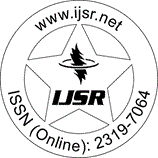Downloads: 216
India | Microbiology | Volume 9 Issue 3, March 2020 | Pages: 1331 - 1333
Biocontrol Efficiency of Endophytic Bacteria Isolated from Curcuma Longa
Abstract: The interaction of diverse communities of microorganisms with the plants helps it to cope up with various functions including growth promotion, yield enhancement and disease management and the microbes derive shelter and nutrients from the host plants [1]. During colonization of the endophytes the microbe resides in almost every internal part of plant ranging from tissues of the underground roots to stem, leaf, lower, fruit and seed. The endophytes are said to actively or passively trigger the physiological changes in the plant cell [2]. Since they are superior in growth promotion they tend to give better adaptations against abiotic or biotic stresses [3]. Most of the endophytes are the common soil bacteria (Pseudomonas, Burkholderia and Bacillus) that produce diverse range of secondary metabolites, antibiotics and volatile organics which helps reduce the deleterious effects of pathogens by mechanisms in line with the PGPR [4]. According to the phylogenetic view, endophytic bacteria vary between saprophytic bacteria and plant pathogens. They behave as either obligate or facultative bio trophic symbionts.
Keywords: Endophytes, Biotropic Symbionts, Growth Promotion, Phytohormones, Agriculture
How to Cite?: Shaju Reema Thankam, Suba G.A Manuel, "Biocontrol Efficiency of Endophytic Bacteria Isolated from Curcuma Longa", Volume 9 Issue 3, March 2020, International Journal of Science and Research (IJSR), Pages: 1331-1333, https://www.ijsr.net/getabstract.php?paperid=SR20322175925, DOI: https://dx.doi.org/10.21275/SR20322175925
